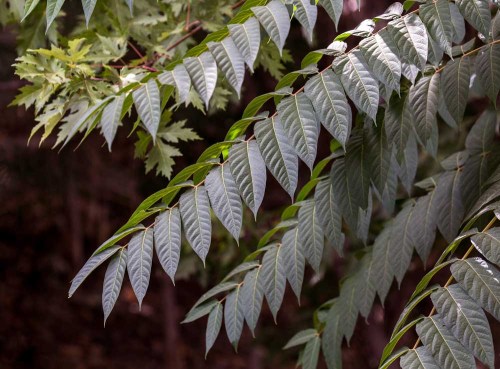Tree of heaven excels at survival
Published 5:37 pm Wednesday, September 2, 2020

- The tree of heaven is a stubborn invader that can’t simply be cut down because it puts out multiple sprouts from its roots.
PENDLETON — Stinking sumac. Varnish tree. Stink tree. Tree of heaven. By whatever name, this tree has invaded Pendleton’s yards, streets, and parks, creating an environment no one would call heavenly. Chances are good that some of these devilish invaders are thriving brazenly in your neighborhood, perhaps even in your yard.
That tree with the gray bark that looks like cantaloupe skin? The one with the smooth-edged leaflets in a long compound leaf that looks sort of like a walnut or sumac leaf? That tree that puts out multiple sprouts from its roots, with an odor like rancid peanut butter? Yep, that’s the culprit.
This tree was introduced into the United States from China in the 18th century, brought in because of its ability to survive all sorts of soil conditions and its rapid growth. It was said to reach for the sky once planted, hence the alias tree of heaven.
This aggressiveness and adaptability are the same traits that make it arbor non grata here in our town. The sap irritates the skin. The fallen leaves put compounds in the soil that inhibit other plant growth. It is a prolific producer of pollen and winged seeds, and puts off a strong, offensive smell. An undesirable character indeed.
Control of this tree is much more complicated than simply cutting it down. In fact, cutting a tree of heaven without follow-up treatment may be the worst thing one could do. This is a prolific sprouter, and cutting down a tree will cause numerous new shoots to rise from the stump and roots many feet out from the main stem. Repeated cutting and mowing of sprouts seems to simply stimulate more sprouting.
The internet is full of ideas about how to control this tree, and the most effective methods seem to involve using an herbicide in late summer on a living tree, applied to the foliage, bark, or “frill cuts” in the bark near the base of the tree. This method uses the tree’s own system to move herbicide to the roots, which should inhibit future sprouting.
Even after such a drastic treatment, it is important to still be watching for new seedlings next spring, especially if there is a tree of heaven elsewhere in your yard or in your neighbor’s yard. Launch an aggressive campaign to find and pull new seedlings, be sure to get the entire root, and don’t try to dig out sprouts attached to the roots of a larger tree.
Do you have a tree of heaven holed up in your yard? You’re not alone; even though the tree has been on the city’s list of prohibited trees (applying to public property), a recent inventory identified 57 individual tree of heaven plants in parks and other public properties. It will take a concerted effort of landowners and managers of public spaces to control this obnoxious species, and this is the time of year to do so.
———
The Pendleton Tree Commission, which is appointed by the city council, assists in guiding the city’s tree management program. This does not include trees on private property, but the commission provides information to the public to help keep all of the trees in the city healthy and happy.



